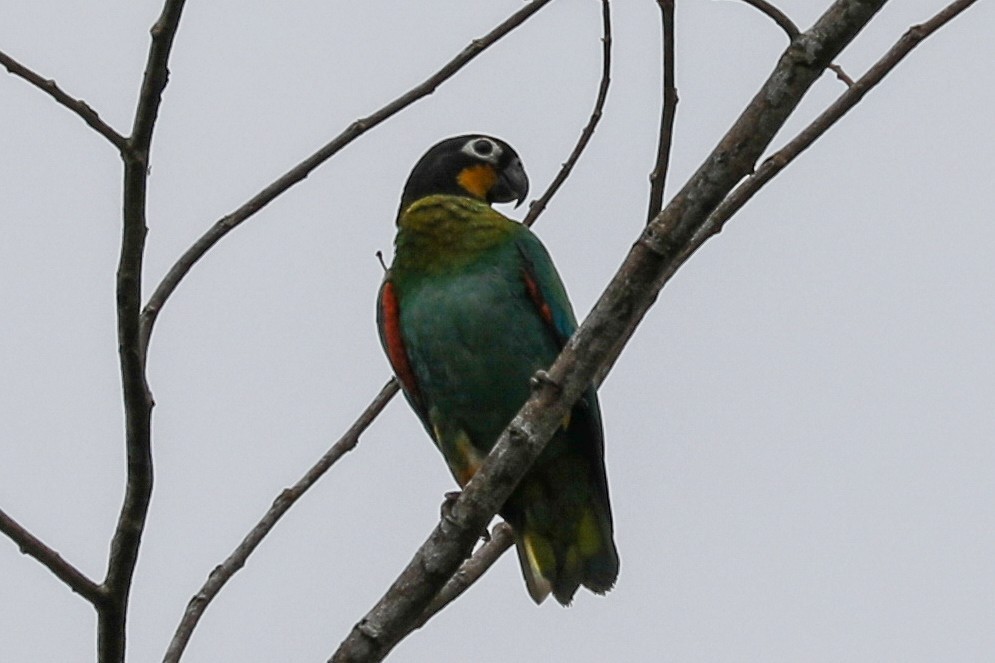Orange-cheeked Parrot
A species of Pileated Parrot Scientific name : Pyrilia barrabandi Genus : Pileated Parrot
Orange-cheeked Parrot, A species of Pileated Parrot
Botanical name: Pyrilia barrabandi
Genus: Pileated Parrot
Content
Description General Info
 Photo By Steve McInnis
Photo By Steve McInnis Description
The parrots are 25 cm (9.8 in) in size and weigh 165–190 g (5.8–6.7 oz). Adults have an olive throat and breast. The thighs are yellow, with the bend of the wing and lesser wing coverts ranging from yellow to orange, and the carpal edge and underwing coverts being orange to red. The tips of the tail and the wing feathers are blue. P.b. aurantiigena has deep orange cheeks, bend of wing, underwing and lesser wing coverts, and thighs, lacking the yellow possessed by barrabandi. They have a black head and orange to yellow cheeks, with a distinctive white eye-ring around a brown eye. The beak is gray to black. Juveniles have a brown crown and olive forehead, nape, cheeks and chin, with a brown margin. The bend of the wings and lesser wing coverts are green with a scattered yellow. The carpal edge and underwing coverts are red with scattered green feathers. 
Size
25 cm
Nest Placement
Cavity
Feeding Habits
Orange-cheeked Parrot consumes a diet of seeds, fruits, and wasp larvae. Orange-cheeked Parrot forages high in the canopy or just below, and uniquely ingests antacid-like soil at clay banks to neutralize food acids.
Dite type
Frugivorous
General Info
Feeding Habits
Bird food type

Fruit
Behavior
They are active in the early morning. They are often seen singly, in pairs or in small groups of up to 10 individuals at clay banks. 
Distribution Area
It is found in northwestern Brazil, western Ecuador and Peru, southern Venezuela and Colombia, and extreme northern Bolivia. They are found at elevations of up to 400 m (1,300 ft) in lowland terra firme forest and uncommonly in varzea stands. They also inhabit forest edges and partly disturbed forests. 
Species Status
The species is listed as near-threatened on the IUCN Red List as it is susceptible to increasing deforestation in the Amazon rainforest, with its population likely to decrease by 25-30% as it loses habitat. The species is naturally rare in its range. 

 Photo By Steve McInnis
Photo By Steve McInnis Scientific Classification
Phylum
Chordates Class
Birds Order
Parrots Family
Parrots Genus
Pileated Parrot Species
Orange-cheeked Parrot